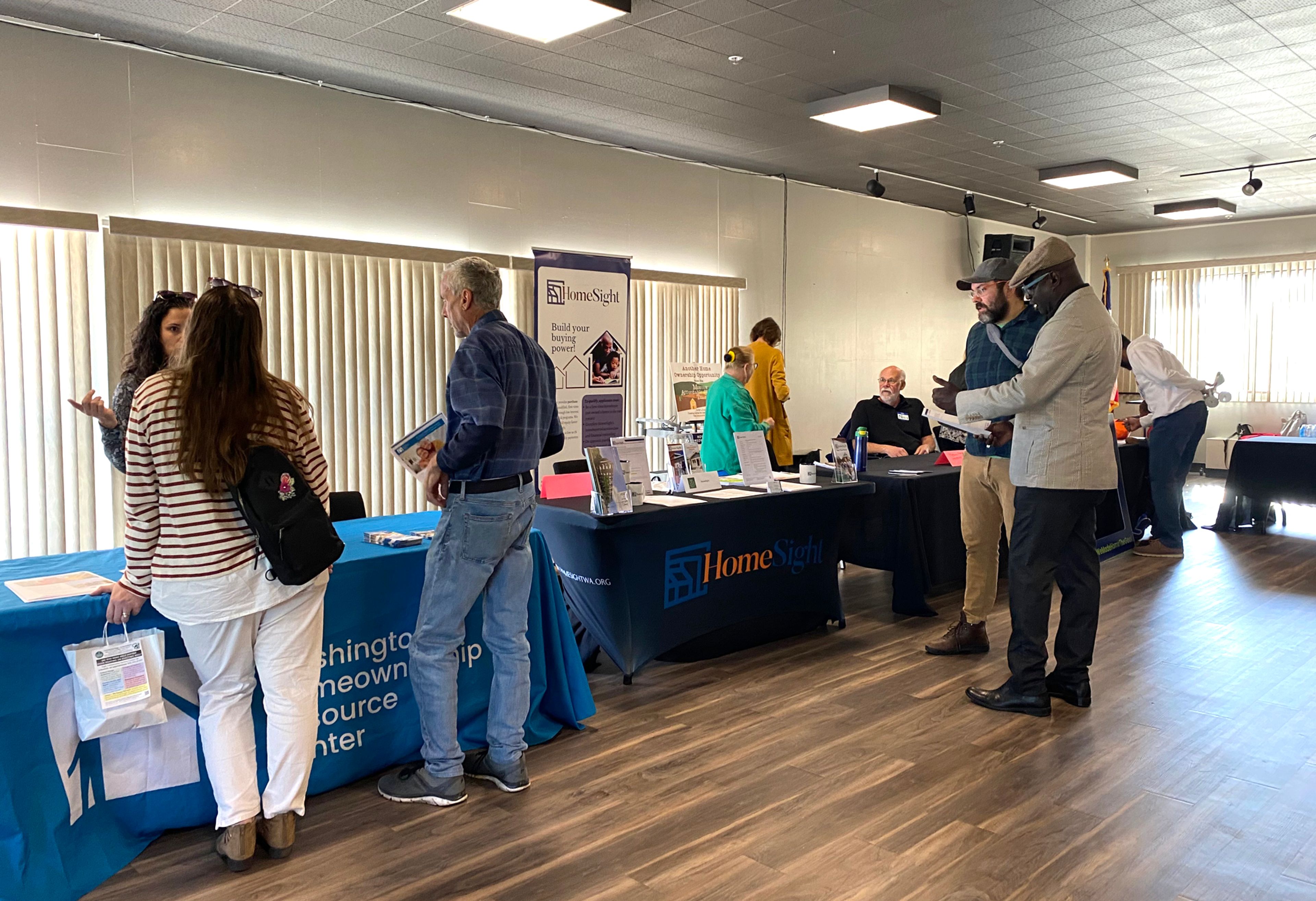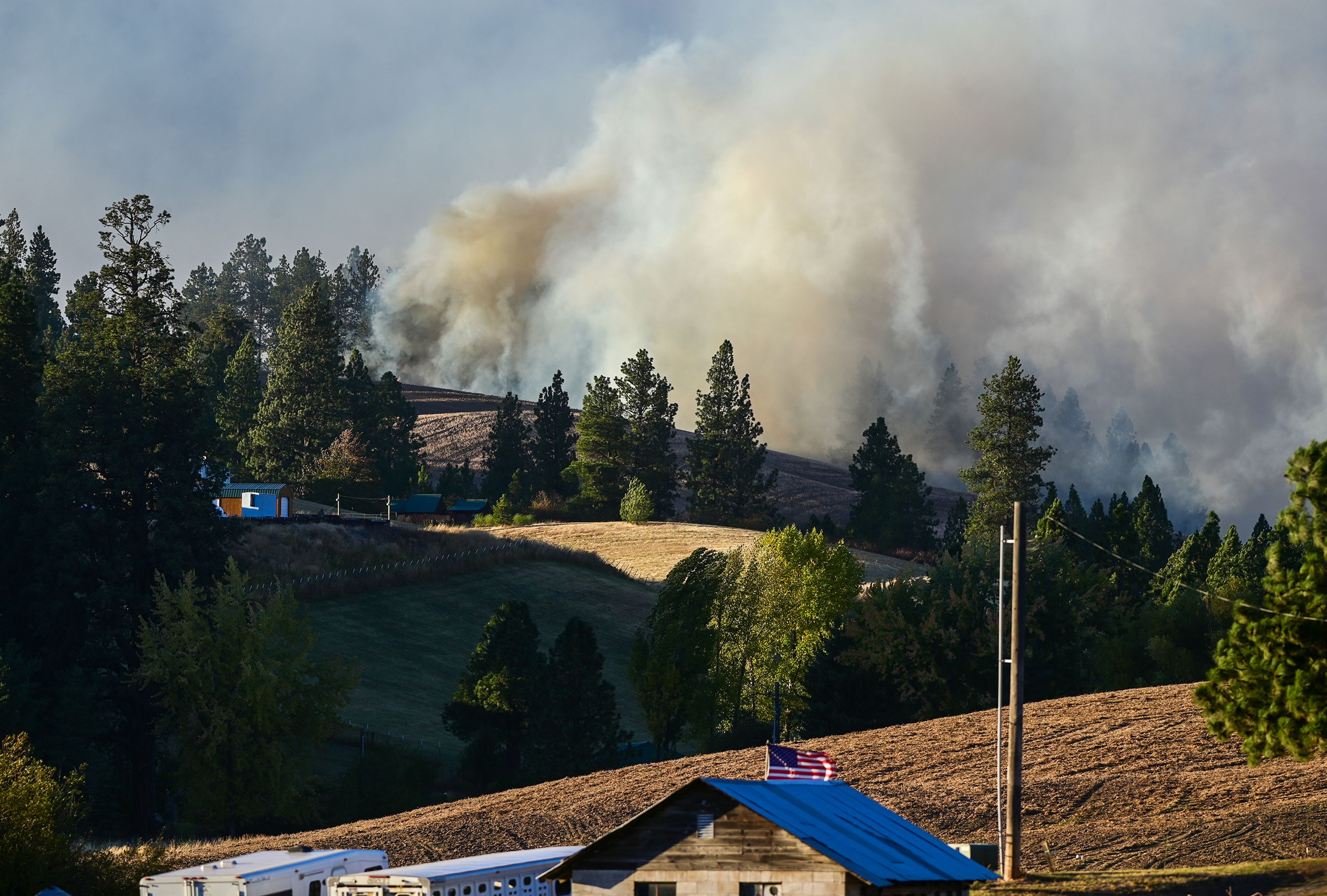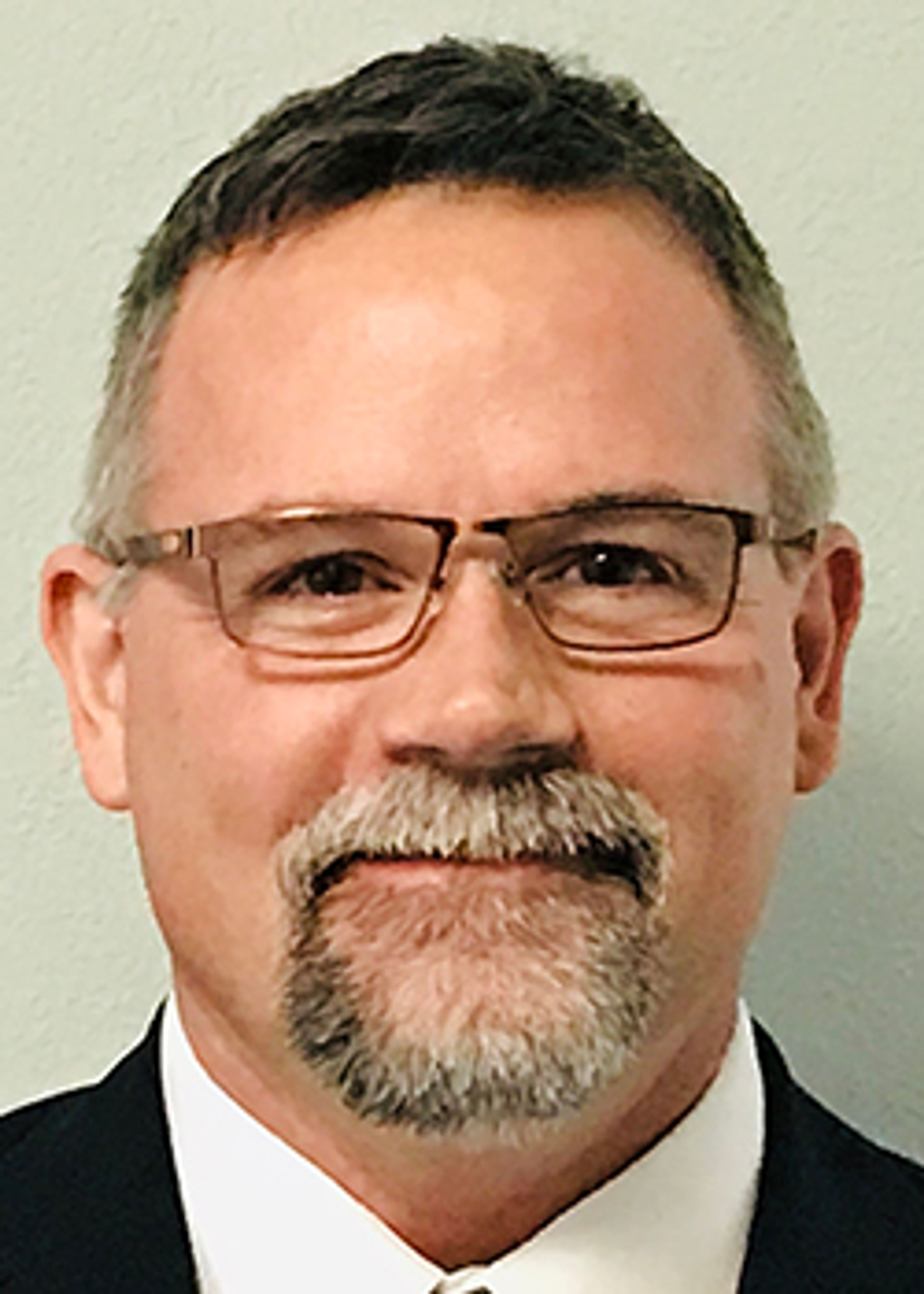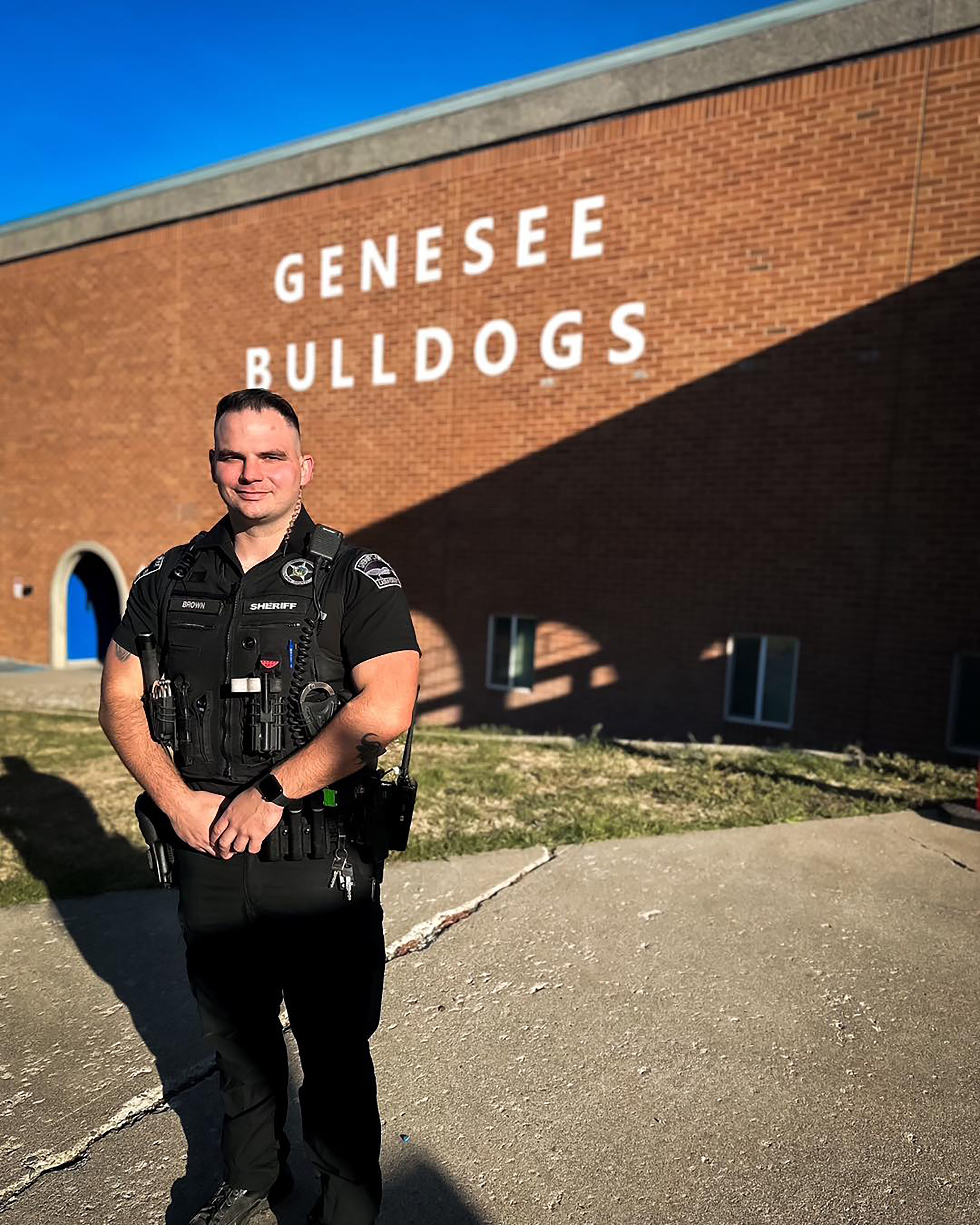In my Tribune mailbox this week was a note addressed ''Dear Tribune Old-Timer.''
I'm old enough to have lost count of the white strands salting my brown hair, and young enough to smile at being one of the old-timers at the Tribune after a little more than 20 years.
I came when lead was still melted in pots and Linotypes clattered night after night. It was a time of typewriters, pica poles (rulers) and glue pots.
And when cold type came, I was one of the few who had ever pasted up a page because that's the way we did it on the old Lewis-Clark State College student newspaper. But because of the printers union, I was threatened with having my knuckles rapped if I touched a strip of type.
Twenty years isn't much history, but it predates slackwater, spotted owls and recycling.
There isn't enough time or space to tell you of 20 years of Tribune people.
Some names have appeared time and again in centennial columns, and others were here so briefly that few remember.
How many people know that Lewiston Police Capt. Jack Marshall used to cover the cops and courts beat for the Tribune?
How many people remember Ed Eline, who also covered cops and courts. Until he was arrested on a charge of rape. The Tribune found out when he didn't show up
at work, and Tommy Campbell, aka Thomas W., went down to do his checks. Guess what, the cops said.
Not many here remember Wendy Williams, the young intern who was working the night the body of Kristin David was discovered below Red Wolf Crossing, better known then as Someday Bridge because of the pillars that stood in the river waiting for money to build the bridge deck.
Wendy, who always wore skirts and sandals, and an intern photographer, Murray Koodish, spent until long after dark and shortly before deadline on a rocky riverbank littered with rattlesnakes and body parts.
They came back to an angry editor who didn't know where they had been or what was going on, and broke one of the most horrifying and heartbreaking stories the Tribune has run.
Wendy covered the story for several days over a long holiday weekend before going home and collapsing.
She and Murray are journalistic heroes in my book green, scared, and covering the news.
I've heard people say that Sylvia Harrell knew every rock that went into the Lewiston levee system. She certainly knew as much about it as the people who worked on it, and she explained in good American English slurry trenches and all the other reasons why the river wasn't going to flood downtown Lewiston and Clarkston.
People loved Tommy Campbell's coverage of city and county government. Tommy believed his stories had to be entertaining first, to get people to read them, and you sort of sneaked the important stuff in sideways.
But after he retired, several community leaders in great good humor told of Tommy quoting them when he, in fact, hadn't reached them. ''But isn't that what you would have said?'' he reportedly asked more than one of them, and smiled smugly when his longtime sources conceded that he had indeed caught the flavor of what they would have said if they had been asked.
Then there was the time Clarkston Mayor David Justice called the managing editor after being interviewed by Lew Pumphrey. Lew, who bore a slight resemblance to a gorilla, had appeared in his usual dress tank top, shorts and thongs.
The office of the mayor should at least deserve shoes, Justice said.
Point taken. But we still didn't get stuck with a dress code in the newsroom, where you might interview the president of Potlatch Corp. in the morning and be out on a fire an hour later.
%
The good old days: The summer of 1972 on the proof desk when the shift ended at 3 a.m. after the presses started. Those were the days of the regional desk handling 30-plus correspondents in every small town in our readership.
Ronnie Hayes used to teach at Lewiston High School all day, hit the Tribune and the phone in the late afternoon, and at 1 a.m. still be writing correspondents' stories births to murders and lay out the regional pages as he went along.
Hal Hollister was reknowned for many things at the Tribune, but my favorite was having the guts to write editorials on the weekend shifts that he knew were directly opposed to what the publisher would want said. Hal hated writing editorials, and that was his way of getting his job description changed. I can still hear his raspy chuckle when he succeeded.
Sometimes Tribune habits were difficult for newcomers to get used to.
That led to the evening the rookie reporter ran into the newsroom yelling ''Margaret's dead!''
Margaret Day Allen was hired as a reporter during World War II because male reporters were in short supply, and she continued working until well into her 80s as the Tribune's librarian and historian.
In her later years, wig askew, Allen often fell asleep at her typewriter. There also were the naps she took on the twin bed in the ladies' lounge. She would remove her teeth and lay down for a silent snooze.
We didn't tell the rookie that more than one of us had stopped on a quiet night to check on her.
There was the editor who threw a typewriter in a fit of pique, and the reporter who threw up on hers after a Tribune Christmas party back behind the pressroom.
It's a quieter, milder, more professional crowd now. Most of the time. I don't really miss what I knew as the good old days. Not often.
Let someone else write the history of the Lewiston Tribune from the arrival of the Alford Brothers, through hand presses, Linotypes, hot metal, cold type and computers.
The real history of the Tribune is roads and rivers and people.
The history is in headlines gleaned from old copies so fragile the paper cracks when turned.
Sept. 29, 1892, 100 years ago today: Stagecoach driver Frank Costin brought news from Cottonwood to Lewiston about the killing a day earlier of Will Chambers by Chance Yandell during an exchange of gunshots that ended a meeting intended to patch up a feud between the two men.
The 1895 land rush opened up half a million acres of the Nez Perce Reservation to white settlers, regular boat service between Lewiston and Kamiah started a year later and railroad construction a year after that.
The ''Ill-Fated Flight'' of Winslow's Folly from Lewiston Bluff was called the Dawn of Aviation in 1904.
The opening of Celilo Canal on May 3, 1915, creates Lewiston's old dream of an open river to the sea, making it ''Idaho's Only Seaport'' 77 years ago.
The Spiral Hill highway opened in 1917.
Republicans swept the local elections in 1918.
Democrats won by a landslide in 1932, and again in 1936.
Wheat dropped to 18 cents at Lewiston and 14 cents at Nezperce, and residents of Nezperce and Culdesac were burning it instead of coal in 1932.
The newspaper carries reports of bridal and baby showers in towns that no longer exist except in oldtimers' minds and perhaps in a tumbledown building.
They tell who brought home a deer, and sometimes who didn't.
A story in the Tribune's 1942 Golden Anniversary Edition names Wallace B. Stainton as the Tribune's first typesetter and reporter, later city editor, and also part-owner of the newspaper.
That was shocking news to those of us raised on the legend of the Alford family newspaper.
According to family lore, a few key Tribune employees were given small amounts of stock that had to be sold back if they quit or retired, recalls the present publisher, A.L. (Butch) Alford Jr.
''It was at minimum a symbol of participation in the Lewiston Tribune, and that was probably more valuable than the monetary value,'' Butch said. ''But that's all before my time, and it's nothing more than speculation.''
Much of history is speculation, and so probably is much of what appeared in our newspapers, especially 100 years ago.
But there still is something curiously satisfying in reading those actual reports of letting of bids for the construction of White Bird Grade in November 1918, the last missing link between the north and south of Idaho. Or the start of construction in 1932 of a new airport west of Lewiston Orchards by the chamber of commerce, who would turn it over to the city the next year.
Newspapers, no matter how old, how tattered, are living history of people and a changing land.







